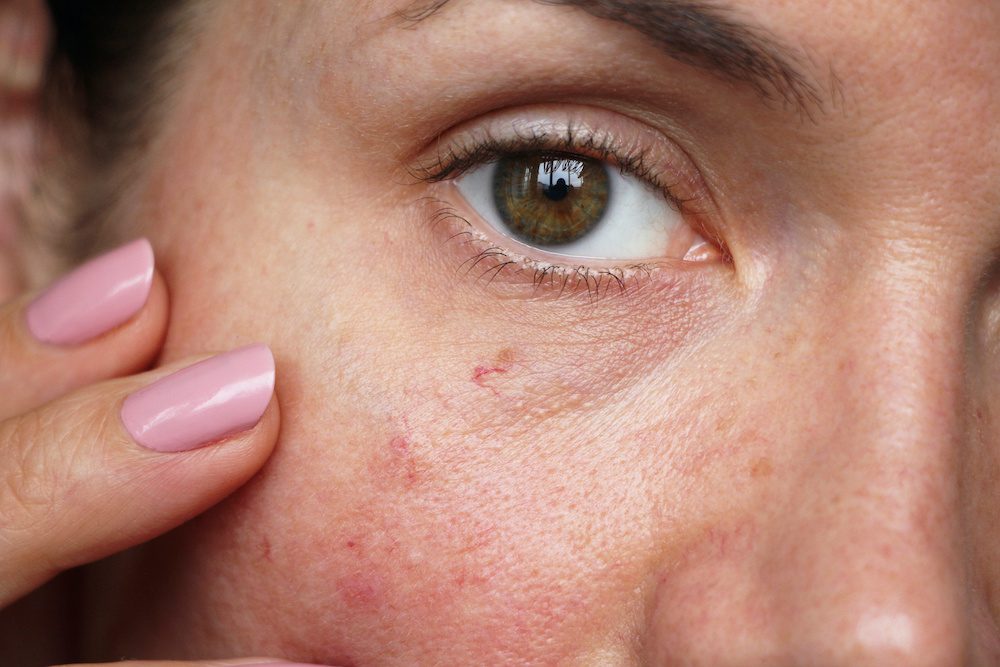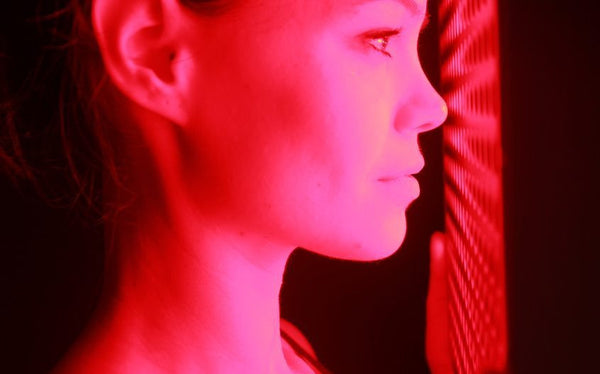Red light therapy has been getting much attention worldwide as a non-invasive way to fight the aging process and other face and overall health issues.
Scientists have found many ways to use this ground-breaking technology instead of radical methods to potentially help with various dermatological conditions, like broken capillaries, rosacea treatment, spider veins, etc.
Broken capillaries are a big problem for today’s population. They are dilated blood vessels near the skin’s surface. But does red light therapy help broken capillaries?
Continue reading this article to find out whether RLT may help!
Does Red Light Therapy Help Broken Capillaries?
Red light therapy is a common and effective way that may eliminate broken capillaries seen on the skin. It is also often used to eliminate freckles, age spots, and skin texture.
The length of treatment might range from a few minutes to a half hour, depending on how bad the broken capillaries are. Many people schedule their treatments during lunch breaks and return to work afterward.
The top layers of the skin are exposed to the red light wavelengths. The heat from the red light might dry up and eliminate the unwanted small blood vessels, making broken capillaries less red. The heat might dry out the dead skin cells and make them flake off.
This treatment may contribute to healthier, newer skin cells rising to the surface, bringing back the skin’s natural beauty.
What Are Broken Capillaries?
Broken capillaries are enlarged blood vessels just under the skin’s surface. They look like bright, blood-red marks, usually in a spider-or branch-like pattern, but they can also look like tiny, single pinpricks.
Most spider veins appear on the legs or face, but they can appear anywhere on the body. Spider veins don’t cause any other symptoms besides how they look.
Furthermore, broken capillaries are called telangiectasia. They appear on the nose, cheeks, and chin. Just under the skin, capillaries can dilate or break, and broken items can’t be repaired.
They may be prevented by rigorous cleaning, hot water washing, and sun exposure. Broken capillaries may have unavoidable causes, such as:

Source: yourlaserskincare.com
Hormones
Hormonal changes happen in the body during pregnancy, menopause, and puberty. These changes can cause capillaries to break. This could be because progesterone and estrogen levels have changed.
Genetics
Some people get broken capillaries, spider veins, and varicose veins more often because of a family gene. If one or both of your parents have broken capillaries, likely, you will too.
Damage
Broken capillaries can be caused by damage to the skin, like a cut or scrape. This could be caused by something as serious as a blow to the face or something as simple as glasses pressing on the nose. Scrubbing the face hard is also a form of trauma and could be a cause.
Problems with health
Some medical conditions that can cause broken capillaries are blood clots that block the flow of blood, inflammation in the veins, constipation, rosacea, and systemic skin infections.
Lifestyle
Even though you might be able to change your lifestyle, changing your job might not be easy or practical. People whose jobs require them to stand for long periods, like nurses and teachers, may be more likely to get spider veins because their legs have to work harder to get the blood back to the heart.
People who sit for long periods may also get spider veins because their circulation may be blocked, and their blood pressure may build up in their legs.
Sun exposure
Long-term exposure to direct sunlight may not cause spider veins directly, but it does damage collagen in the skin and may make broken blood vessels worse if they are already there. Broken capillaries get worse for many people in the summer.
Obesity
After being born with them, the main cause of spider veins on the legs is being overweight. Too much weight, especially around the middle, puts too much pressure on the legs, which raises blood pressure. It also stops blood flow and stretches the skin, making capillaries more likely to break.
Aging
Your skin becomes thinner and less elastic as you age. It also loses collagen and elasticity, which makes it more likely to get hurt.
Abuse of alcohol and smoking
If you drink too much alcohol, your blood pressure may increase, damaging your blood vessels. When you smoke, your circulatory system gets hurt, which makes the capillaries weak.
About Red Light Therapy
Red light therapy (RLT) may be a beneficial treatment that may help your skin look youthful, removing wrinkles, scars, redness, acne, etc. It may also be used to treat several other conditions.
The effectiveness of red light therapy for various health purposes is currently the subject of much-continuing study, the publication of minor studies, and active discussion on the Internet.
Red light treatment has been demonstrated in several trials to potentially be beneficial, although its effectiveness is yet unknown.

Source: blockbluelight.com.au
You Might Be Interested: How Effective is Red Light Therapy
Conclusion
Well, this is the very end of this article. So, does red light therapy help broken capillaries? We hope you have discovered everything regarding that concern.
Red light therapy has been looked into for more than 50 years. Even though there have been no reports of risks or reasons why it shouldn’t be used, you may want to talk to your doctor first if you are pregnant, have a medical condition, or are taking any medications.
You might also want to skip this treatment if you are sensitive to light, sunburn, or have just used a chemical peel on your skin.
Since red light therapy may be safe, you may use it to treat broken capillaries. However, before doing anything at your own risk, please consult with your doctor regarding your overall health.

Hello! I’m Nicky Rodgers.
Almost a decade ago, I got excited about the idea of employing alternative methods like red light therapy to create a healthier life.
To learn more about it, I did my Certified Light Therapist course from Photonic Therapy Institute and started looking into the intricacies of how light therapy influences several bodily processes. Before I knew it, my interest had become an obsession which resulted in this extensive blog.
Here, I offer countless well-researched articles to help you understand the benefits and uses of light therapy. I hope this information gives you a head start in your wellness journey.
